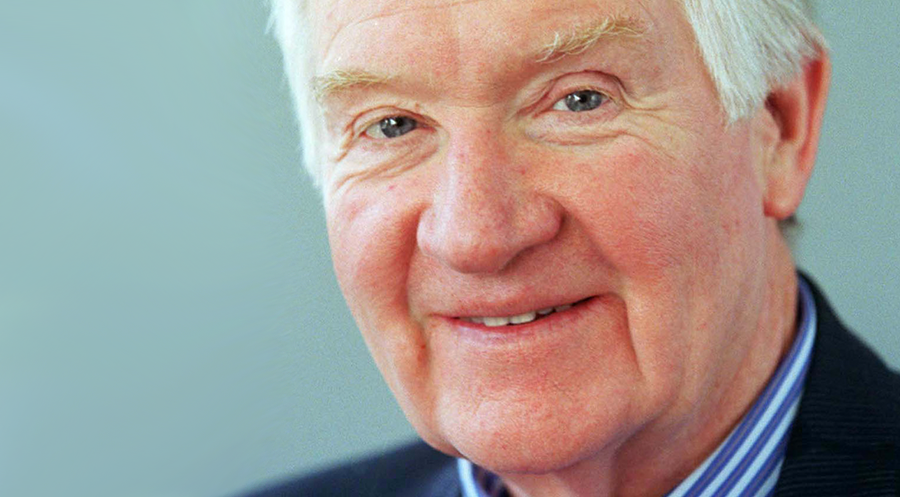Meet Hugh
In preparation for an interview about opportunities and challenges that engagement with CANet offers patients, Hugh Winsor went digging through files, score sheets, and evaluation forms that have been his constant companions in his time as a Patient Partner in the research network.
“It reminded me of how big an exercise it was to transform the role of patient partners in the process of assessing research proposals—took a lot of work, many memos, reports, drafts consultation and finally implementation,” he says.
Winsor is a retired Globe and Mail journalist whose thirty-five-year career covered Parliament Hill, and Queen’s Park, both places where health policy is an important journalistic staple.
That interest “dramatically intensified and became sharply focused” – Winsor’s words – when he developed atrial fibrillation almost 18 years ago.
In the course of his ongoing treatment at the University of Ottawa Heart Institute, Hugh served three terms on its board of directors. During that time, he was invited to join the patient advisory council of the nascent Cardiac Arrhythmia Network of Canada.
“I jumped at the chance,” he recalls. “But I wouldn’t have stayed and devoted a lot of time and energy if I hadn’t found that CANet was making a difference in arrhythmia research and treatment. My particular interest was electrophysiology, a science I had and continue to benefit from with my own atrial fibrillation, atrial flutter, and a number of complex catheter ablations.”
Hugh has been a patient partner on both CANet’s Research Management Committee and the International Expert Advisory Committee (where the scoring of most research proposals starts.)
In these roles, he reviews investigators’ applications for project funding (as well as following up on how the funded investigators are proceeding on their projects.)
“A patient brings to this process his or her own experience of the various procedures and treatment they have received, and how it impacted the rest of their lives. They have an appreciation of their own priorities as well as the likely priorities of other patients with similar experiences,” he says.
But often, that is not enough.
In his experience, patients need to combine their own lived experiences with a wider understanding of the cardiology and science involved in the proposed investigation.
Only then can patients fairly assess the potential patient benefit from any proposed study.
Before Winsor’s involvement, patient partners had little input in evaluating CANet research proposals – in many cases, it often meant just an informal comment or two.
“I felt patient input would be more effective if it were structured, rigorous and consistent,” Winsor recalls.
So, along with other patients and CANet support, Winsor developed a formal quantitative scoring grid for each application that established minimums for it to proceed. The grid measures patient-centeredness, patient engagement and how proposals might line up with CANet’s three major goals – empowering (1) patients to manage their own health, (2) caregivers to improve patient care at the bedside and in the community, and (3) health care providers to give timely, effective, and efficient services.
Patient evaluation scores are combined with scientific evaluations to produce a final score.
Patient centeredness, Winsor explains, evaluates a study’s relevance to patients’ concerns and lifestyles – to what extent does the application identify potential end-users of research findings such as patients, caregivers, or family members? Could the results be widely or easily adopted and result in improvements to care and the health system?
Patient engagement assesses if the proposal involves patient participation in more than as subjects of a randomized patient trial. Are they considered as partners, consulted in the planning stage and implementation? Would they be directly involved in the studies, can they give feedback and so on.
“In short, patient evaluators have to make more than touchy-feely observations to fairly evaluate the proposed research,” Winsor explains. “And in practice, we have found that it isn’t so easy to be rigorous when it comes to developing hard numbers. But our changes have clearly given patient input more relevance.”
Winsor offers the example of catheter ablations – a procedure where doctors locate and destroy (ablate) faulty cardiac tissues that create short circuits in the heart’s electrical pathways – by either cauterizing or freezing them – hopefully restoring normal function.
“As a patient evaluator, I don’t have to know how to move the catheters around the heart, but I should have a general understanding of their potential when it comes to scoring proposed research in this area,” Winsor elaborates.” Could the results be more widely applied? Cut down wait time? made more accessible and so on?”
Winsor has been a CANet patient partner for more than five years. He believes that patient partners in the Network have strengthened and structured their assessment of grant applications, and stepped up their own understanding of the science, added value, and contributed to CANet’s refrain of being a “patient-driven” network.
Recently, he has proposed creating an arrhythmia patients’ association to supplement the Patient Partner Committee.
“It could include any patients that have come into contact with CANet, patients who have participated in clinical trials for instance, patients who have responded to surveys, had arrhythmia procedures and are referred by caregivers, or patients who have just learned about CANet through publicity or the web site,” Winsor says.
Such an association, he explains, could serve as educational and communication hubs, be a potential source of candidates for clinical trials and could influence public policy. He compares the proposed association to diabetes patient organizations, which, in his experience, are very effective when it comes to lobbying politicians and have been able to sponsor legislation.
As a long-time advocate for public health policy, Winsor encourages others – especially those living with cardiovascular health problems, including atrial fibrillation – to be more proactive in the public health policy dialogue, and become advocates for more federal research.
“I really encourage patients to learn more about what they are going through, learn more about their situation, and what can be done about it,” he says.”

